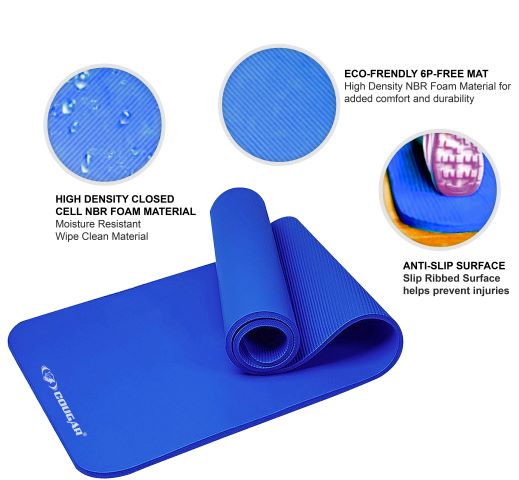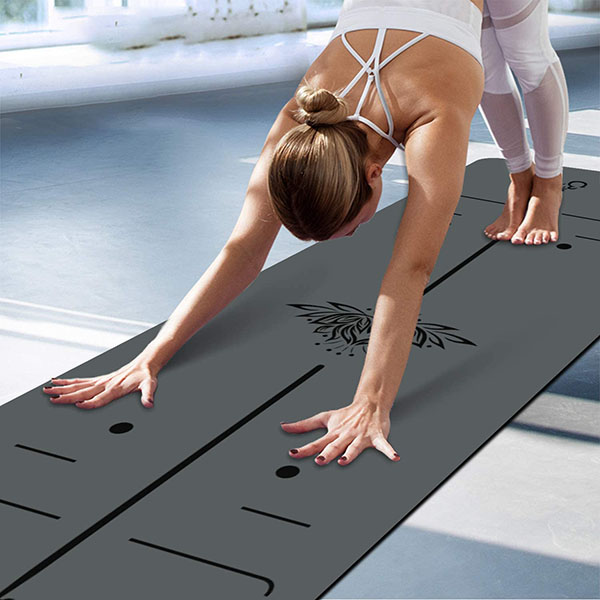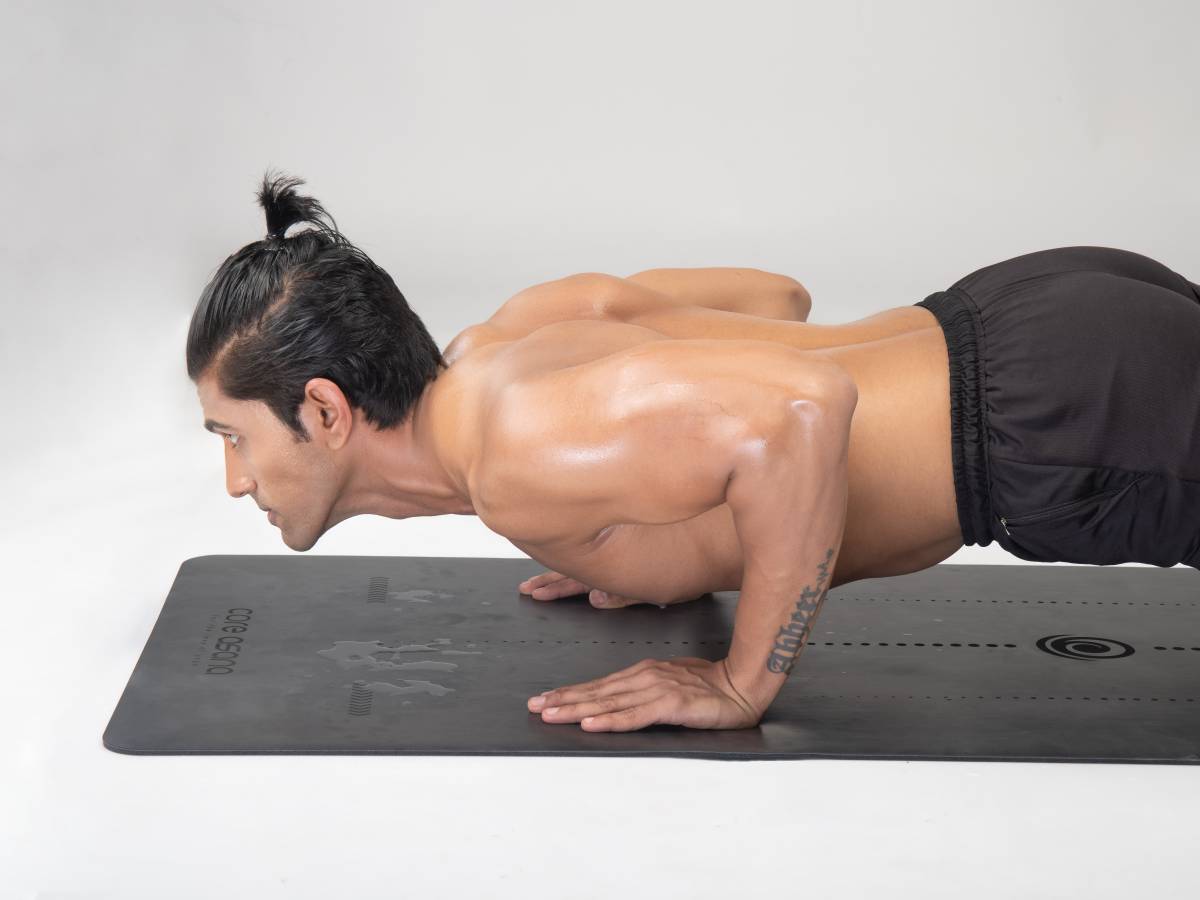
Introduction:
Yoga mats come in a variety of materials, each with its own set of advantages and disadvantages. With numerous options available, selecting the right yoga mat can be daunting, especially for beginners. Fear not, as we have conducted extensive research to comprehensively analyse and compare the top yoga mat materials, including eco-friendly options. In this blog post, we will explore the best yoga mats on the market, delving into the strengths and weaknesses of each material.
The Yoga Mat Material
Choosing the right material for a yoga mat involves comfort, insulation against cold surfaces, and adequate traction. To assist in this decision-making process, we, Ben Well Health as a yoga enthusiast and practitioners, provide a detailed analysis and comparison of the various materials used in yoga mats.
Note:
The description of the yoga mats name has many differences, gym mats, fitness mats and her yoga mats in the article. exercise mats. For consistency, we will ref
The yoga mat material is one of the most important factors when choosing a yoga mat.
Different yoga mat materials affect the yoga mat’s lifetime, the eco-friendly performance of the yoga mat, the yoga mat smell, the yoga mat’s retrievability, the yoga mat’s stickiness and the best way to clean gym mats.
1. Rubber Yoga Mats
Rubber mats offer resilience, durability, and excellent anti-skid performance, albeit with reduced effectiveness when hands and feet sweat. The natural texture of rubber mats provides strong friction and traction. While these mats have an intrinsic smell that is challenging to eliminate, they are considered safe and eco-friendly
PROS:
- Durable and long-lasting
- Great grip and stability
- Supportive cushioning for joints
CONS:
- They can be more expensive than other types of yoga mats.
- They have a strong rubber odour that can take some time to dissipate.
2. TPE Yoga Mats
Made from a combination of plastic and rubber polymers, TPE mats boast anti-skid properties, elasticity, and durability. However, they tend to be pricier.
TPE mats are particularly suitable for yoga exercises.
| Advantages | Disadvantages |
|
|
3. NBR Yoga Mats
 NBR (nitrile butadiene rubber) mats are synthetic and known for wear resistance. However, they may lack in non-slip and elasticity aspects. Some concerns include the potential for skin allergies due to processing agents and an inherent odour resulting from foaming agents.
NBR (nitrile butadiene rubber) mats are synthetic and known for wear resistance. However, they may lack in non-slip and elasticity aspects. Some concerns include the potential for skin allergies due to processing agents and an inherent odour resulting from foaming agents.
ADVANTAGES.
- Easy to clean
- Non-toxic
- waterproof
- Biodegradable
- Sweat and dirt-resistant
- Durable (but not as durable as PVC or TPE mats)
- Comfortable to use
- Free from chemicals and toxins
- Anti-ski
DISADVANTAGES:
- Heavy
- Can cause allergy to some (people with an allergy to latex)
- Has a strong smell that goes with time

Polyurethane (PU) is an emerging organic polymer known for its anti-wrinkle, frosted, and anti-slip properties. However, it is more expensive and requires careful maintenance, making it less suitable for beginners.
ADVANTAGES:
- They provide good traction, making it easier to maintain proper form and balance during yoga poses.
- They are durable and long-lasting.
- They are biodegradable and made from a renewable resource, making them an environmentally friendly choice.
DISADVANTAGES
- They can be more expensive than other types of yoga mats.
- They have a strong rubber odour that can take some time to dissipate.

PVC mats, made from a plastic-based material, are durable, easy to clean, and offer excellent floor grip. However, they can become slippery with heavy sweating and are not as environmentally friendly as other options. PVC mats are gradually losing popularity in the market.
PROS:
- They are typically less expensive than natural rubber mats.
- They are easy to clean and maintain.
CONS:
- They are not biodegradable, and may not be as environmentally friendly as natural rubber mats.
- PVC may contain harmful chemicals, so it is important to look for mats that are phthalate-free.
- They may not provide as much traction as natural rubber mats.
2. Thickness and Density of Yoga Mats

The thickness of a yoga mat affects comfort and joint protection. Thicker mats offer better joint cushioning, while thinner mats improve balance.
Consideration of personal goals in yoga practice is crucial when choosing the thickness.
3The Size of the Yoga Mats

Choosing the right size depends on individual height and preferences. Standard sizes are recommended for beginners, but taller individuals may opt for larger mats. It’s essential to balance size with convenience for storage and portability.
4. The Traction and Texture of The Yoga Mat
The stickiness or grip of a yoga mat influences safety during practice. PVC mats generally offer the best traction, while TPE and NBR mats may lack in this aspect. Uneven textures in mats enhance safety and comfort during exercises.
Note: New yoga mats may be slippery initially, but this can be addressed with a salt scrub during the break-in period.
5. The Types and Designs of Yoga Mats
Our company offers personalized yoga mat designs, colours, and patterns to highlight brands or individual preferences. Customizable options include mats with logos, double-colour PVC mats, suede fabric and natural rubber mats, each supporting unique patterns.
Yoga Mat with Custom Logo, Double Color PVC Yoga Mat, Suede Fabric & Natural Rubber Yoga Mat all support custom patterns and logos. We will help you create your yoga mat.
3Maintenance and Cleaning of the Yoga Mats
Cleaning yoga mats is a simple task, requiring a damp cloth or water and vinegar solution. Infrequent cleaning is recommended to prevent odours and sweat stains. Some materials are even machine-washable, but care instructions must be followed to avoid damage**.
Some special materials yoga mats even can be washed in the washing machine, but you need to read the wash care information first, do not wash them in the washing machine for too long, it may accelerate or cause damage to the yoga mat.
Analytical Comparison of Yoga Mat Materials
In conclusion,
this comprehensive guide aims to assist you in finding the most suitable yoga mat for your needs, considering your primary concerns and the types of exercises you plan to perform.
.


